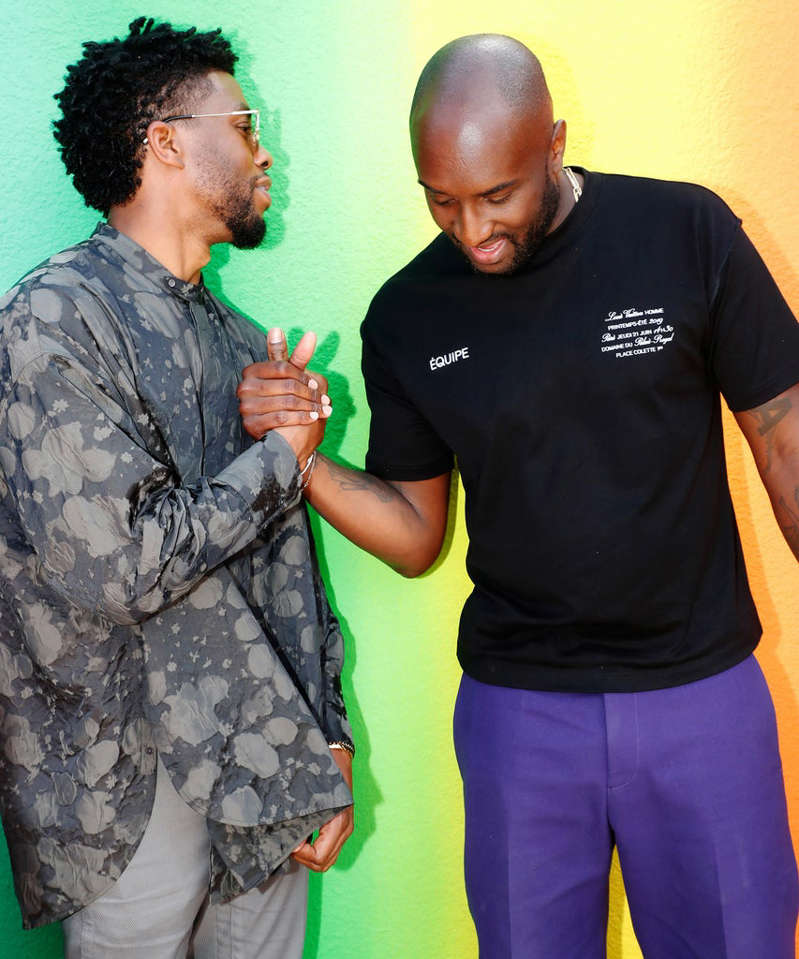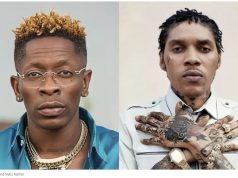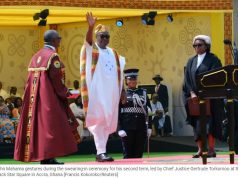“I don’t have to do nothin’ but stay Black and die.” This oft-repeated phrase in Black communities of a certain generation tells a story of people who have work in their blood. Black people have always been working. We’ve always been creators: of life, of magical somethings out of bleak nothings, of recipes that persist for generations in hushed reverence, and of art that has delighted, baffled, and radicalized us.When the news that revered designer and Louis Vuitton artistic director Virgil Abloh, 41, passed away from cancer on November 28 hit social media, once again, we mourned in collective shock.
It was suddenly made painfully clear how young 41 really is. Then came the realization that none of us knew Abloh was sick. I was instantly reminded of Chadwick Boseman, who passed away last year at just 43 years old from another cancer diagnosis kept private.
The similarities between Abloh and Boseman go beyond their private health battles. Abloh, a trained architect and the son of Ghanaian immigrants, was a builder. Learning how to sew from his mother, he forged a prolific path of world-building, one that would culminate in a magnificent collision of fashion, culture, and technology. Abloh didn’t just design clothes, he designed markers of cultural identity. His name was a beacon of a new era in high fashion, an era that not only included Black people, but one that saw us at the helm.
Boseman, who would have turned 45 yesterday (November 29), transported us. Whether it was as King T’Challa in Black Panther, or as Levee Green in Ma Rainey’s Black Bottom (his final role, which would later earn him an Academy Award nomination for Best Actor and a Golden Globe Award win for Best Actor), his performances were intimate. He pulled us in close. We weren’t watching an actor spit out memorized lines; we were witnessing a spirit move through a chosen vessel. The profundity of his talent made you believe he was a king. You felt every emotion as Levee describes the horror of watching his mother be assaulted at the hands of white men. Boseman would pierce through the screen and bring you into the character with him. There was no role or part being played; it was seamless, ascendant magic.
It’s hard then not to feel blindsided when these titans leave our world so suddenly. They felt like they belonged to us, so the selfish first thoughts are, How can they be taken from us? Not like this. Not yet. Not yet. So it’s no surprise that when the world learned of Abloh’s passing, some fans felt betrayed. One person tweeted “Us fans really care about this and this totally bums a lot of people out when it’s out of the blue.” To them, Abloh and Boseman owed us not only their work, but also their most private moments. They were supposed to die, like they lived, for public consumption. The intimacy they created through their art felt like it extended beyond what they gave us; it felt personal, which is a testament to their talent. But these moments are important reminders that before they were our cultural icons, they were their own people, with lives that do not include us.
Boseman, and now Abloh, join a somber tradition of Black artists leaving this earth far too soon, jarring us, their adoring fans. Lorraine Hansberry and Audre Lorde passed away at 34 and 58 of pancreatic and breast cancer, respectively. Hansberry was just coming off the heels of writing A Raisin in the Sun, her opus written at just 29 years old, making her the youngest American to win the New York Drama Critics Circle Award. Lorde, at the time of her death, had already published 15 books of poems and essays. Deaths like theirs, and like Boseman and Abloh’s, feel like a double heartbreak. It’s a devastating loss of a young life cut short by cancer and it’s also the profound loss of a great Black mind. They made art that reflected us, that challenged us, that spoke to us. They were us. These are the ancient redwoods and giant sequoias of our communities. We wanted them to be unfellable. They put out their creative energy and work for us to enjoy and pick apart endlessly so their work felt like ours — and they felt like ours, too.
In dying, we confront living. We wrestle with what matters. We navigate how to create permanence and legacy through an impermanent body. We deal with death long before it calls us home. Whether it’s in the care of a sick loved one, or in the care of yourself as you reckon with the suddenly very real prospect of your time nearing its end. I wonder if this is where the motivation to create comes from. Do we make and make and make so that we may fill the hands of those we leave behind with the overflow of all the creativity that consumes us? We spin tendrils of art and wonder out of pain, and through them, we are bound to each other. Boseman and Abloh took their work and brought us in, and because of them, we believed that we could be more. They showed us the possibilities that lived in the nuance of their craft. And, in keeping the most intimate details of their lives private, they took themselves back, and reclaimed themselves as their own.
Black people exist under the constant pressure to resist idleness. In a world that favors endless movement, and endless Black labor, we fight against stillness. There is a sadness in reflecting on Boseman and Abloh’s final years that we now know were filled with illness and gruelling treatments because we also now know that they were still filled with so much work. When do Black people get to rest? Of course, we don’t know exactly what Boseman and Abloh were going through or what their wishes were, but what does it say about our world where we don’t even get to pause for sickness?
Maybe that’s a question we don’t have the right to ask. In keeping their diagnoses private, Boseman and Abloh reminded us that they belonged to themselves. Their illnesses may have been a secret to us, but perhaps it was better this way. We didn’t need to know. It wasn’t for us to know. We weren’t owed anything beyond what they gave us. Their work was a defiance against the end, and ultimately, us. It kept us exactly where we needed to be, no closer and no further. Their art looked death — and us — in the eyes and said, “Not yet, not yet.”
The relationship between work, art and rest for Black people is a contentious and interlocking one. So many of us find rest in creating and sometimes it is the creation that kills us. James Baldwin, after the passing of Hansberry, remarked, “It is not at all farfetched to suspect that what she saw contributed to the strain which killed her, for the effort to which Lorraine was dedicated is more than enough to kill a man.” Some of Lorde’s most notable work comes from her documentation of her battle with cancer, The Cancer Journals. Her final years were spent in the US Virgin Islands, on her terms, refusing to become a victim to the disease that was taking over her body. It’s no accident that she took on an African name, Gamba Adisa, which translates to, “She who makes her meaning clear.”
Black artists like Hansberry, Lorde, Boseman, and Abloh have created legacies that are so much more than the art. They ask us to reclaim our lives as our own, to find the boundaries between what we create and who we let in, and then to hold the line. Fiercely. They remind us that we don’t owe any more than that. We don’t have to do nothin’ but stay Black and die.
Like what you see? How about some more R29 goodness, right here?








